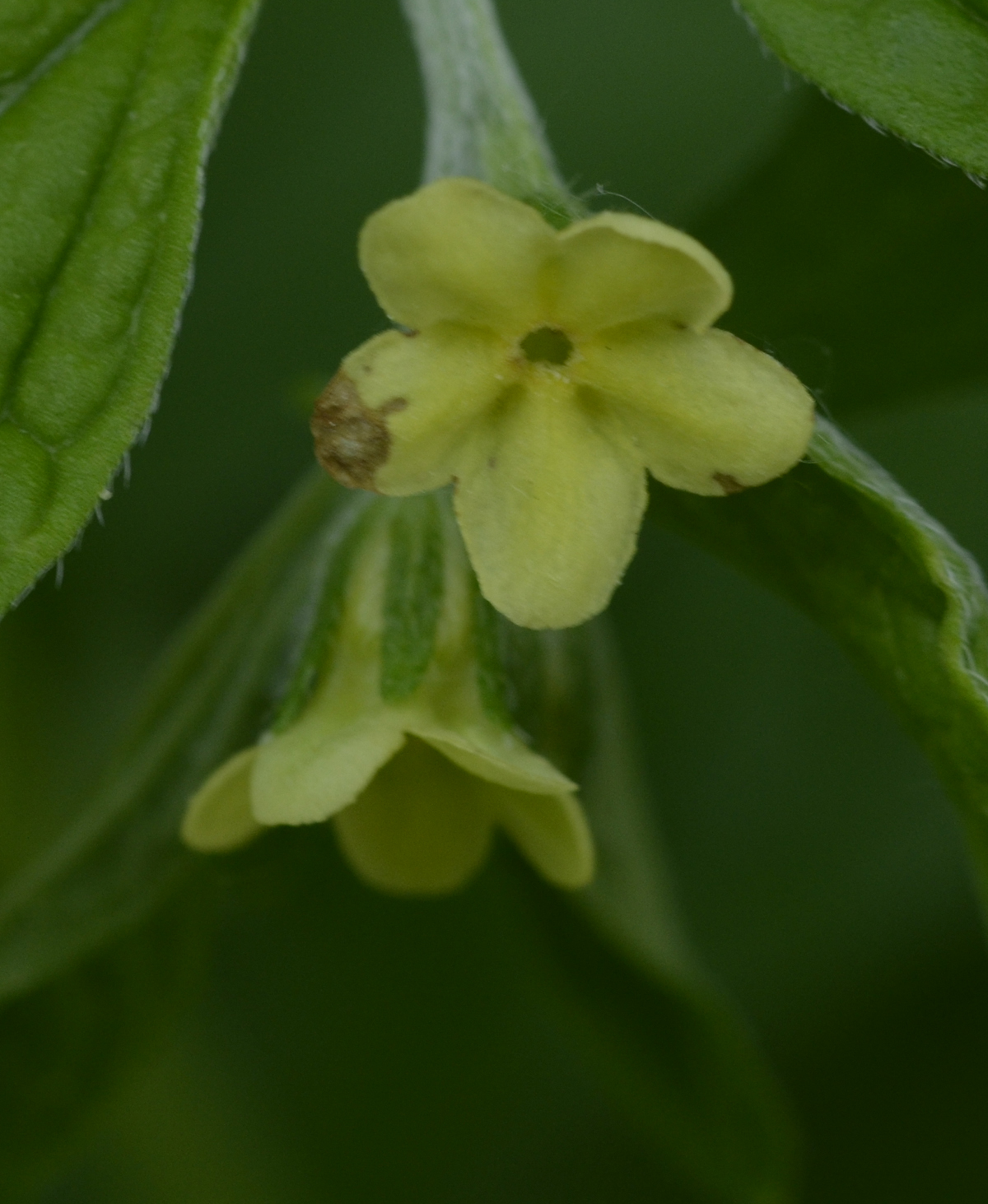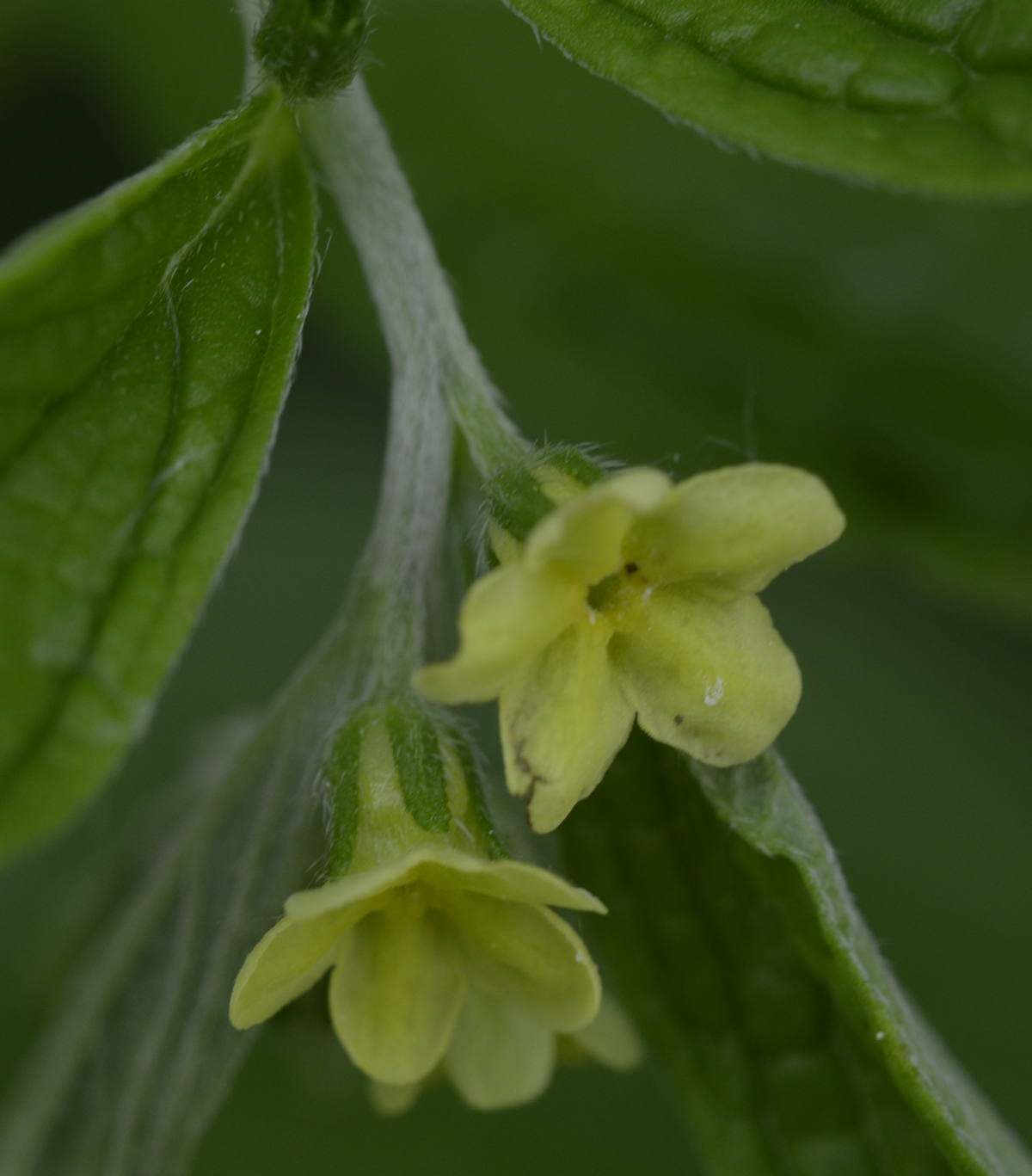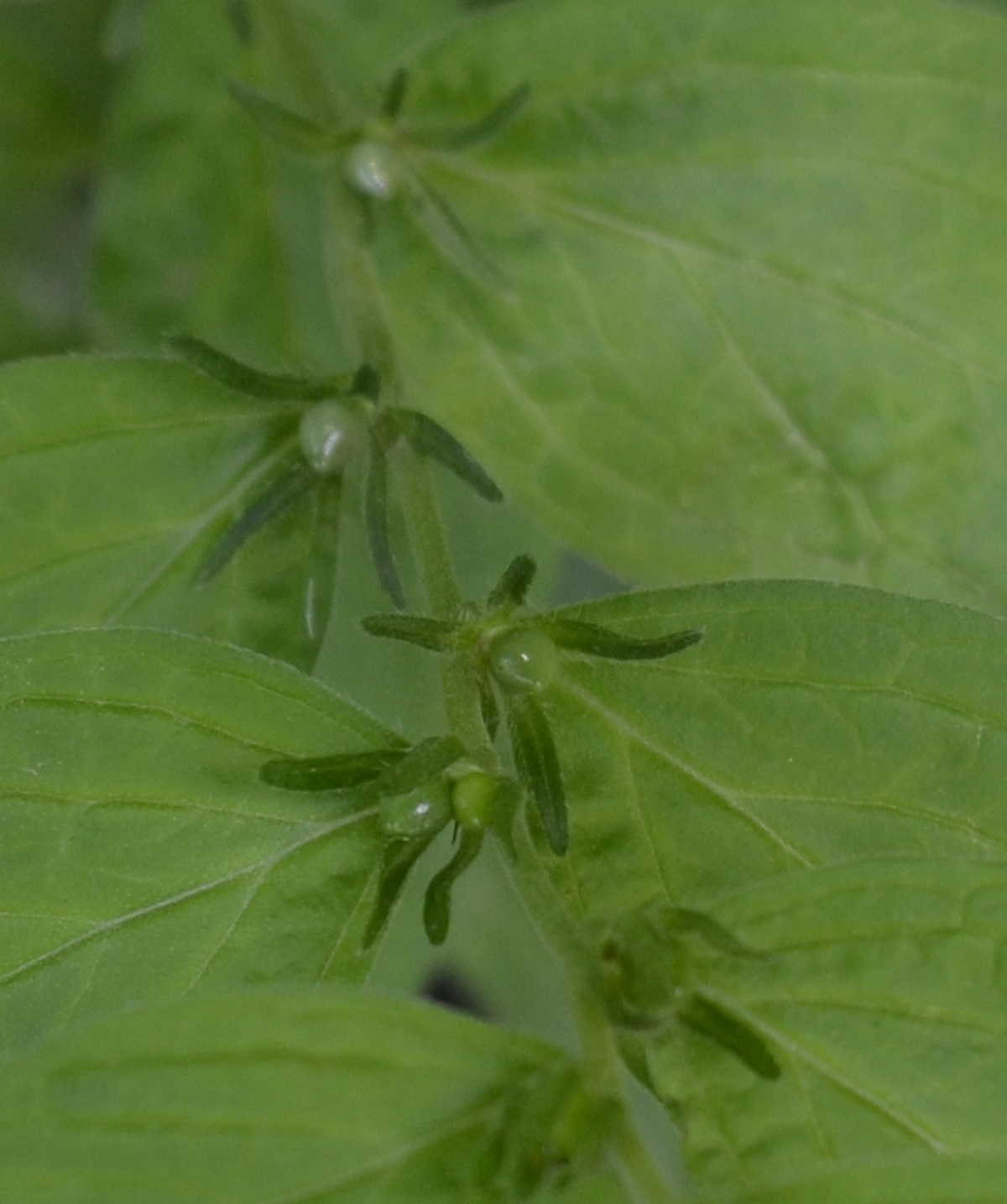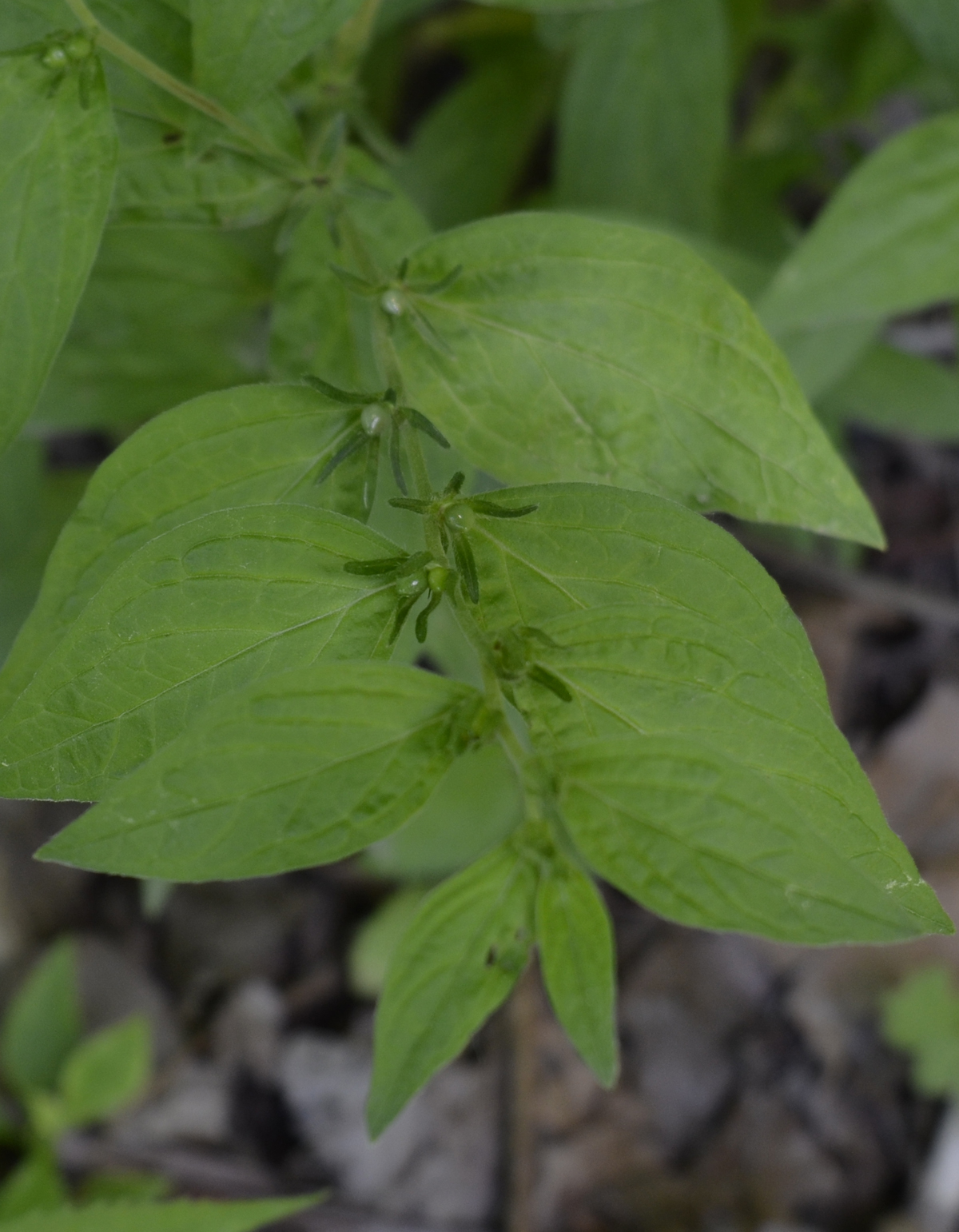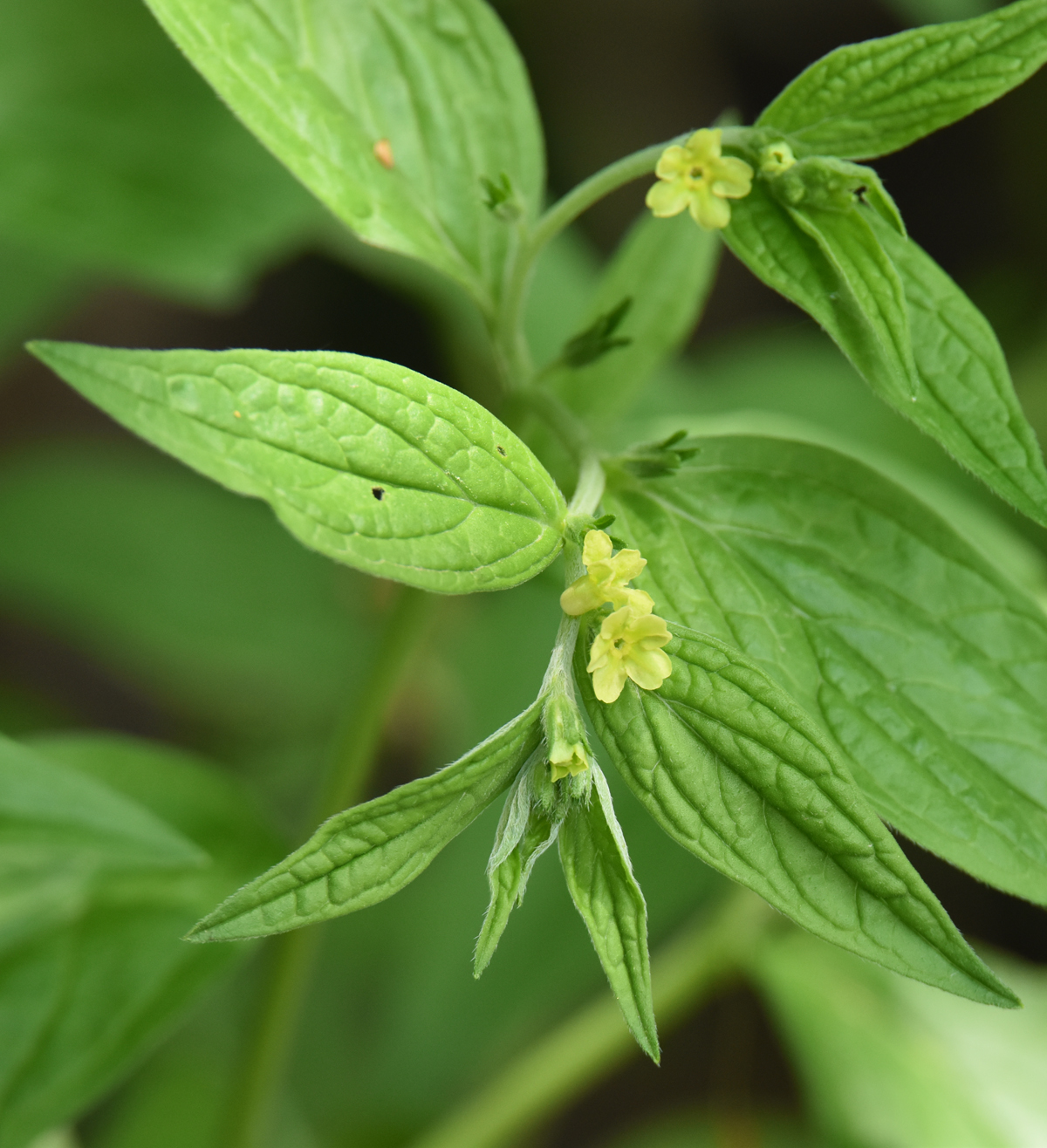A few years ago, I first noticed a fairly tall green plant growing beside the trail through the forest along the Credit River in Mississauga. It was about as tall as goldenrod eventually gets but this was much earlier at the end of May. It had lots of yellow 5 petalled flowers but they were tiny and grew on very short stems from where the leaves joined the main stem. I looked closely at the flowers and saw they had a vaguely tube shape ending in the petals or sepals. The long leaves were a bit hairy and grew out, alternating sides, up the branching stems. I thought they would be easy to look up later in my field guides: I was wrong!
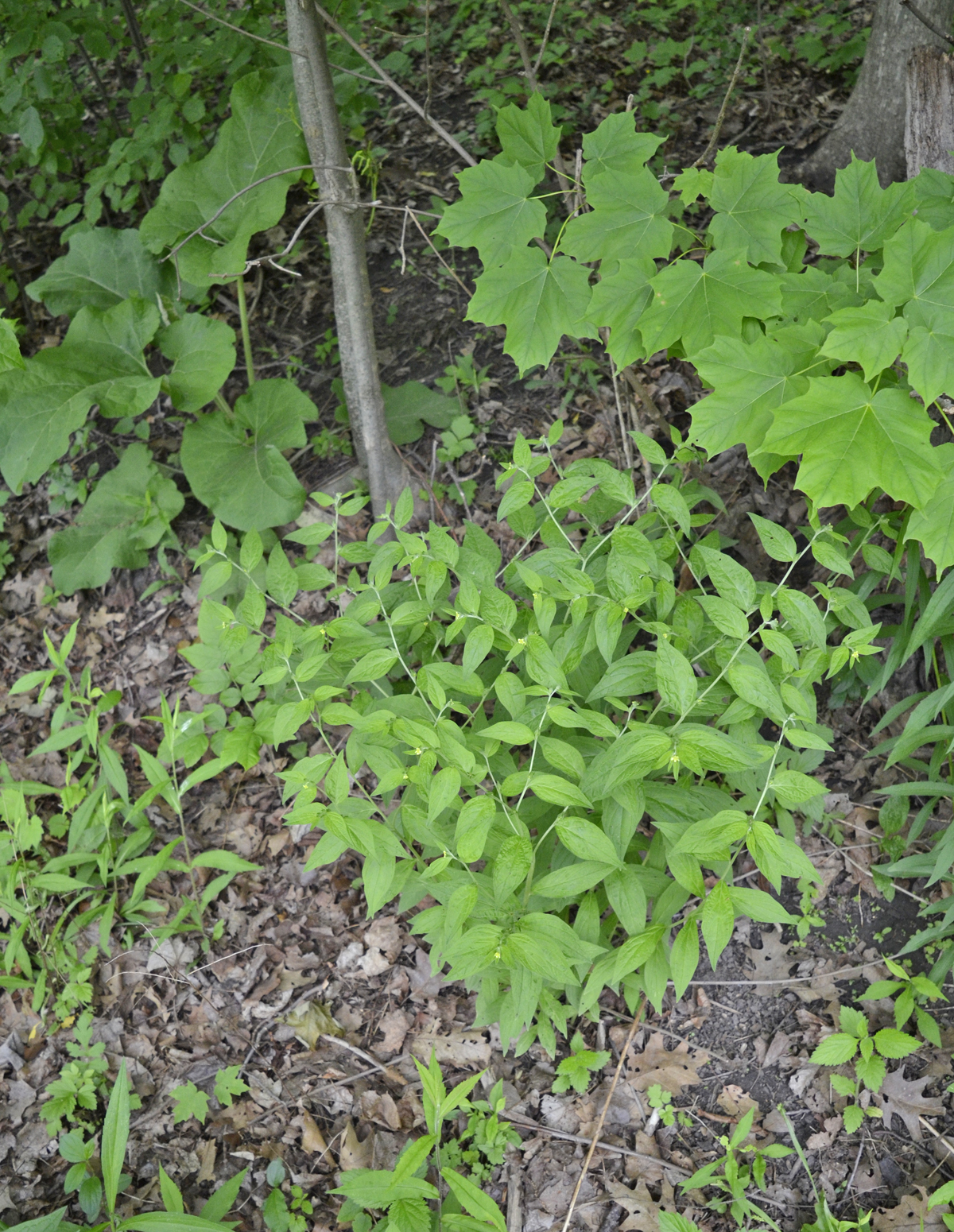
The leafy plant in the center is the one I was trying to identify. You can see maple leaves and Burdock for comparison. This was taken June 5, 2018, in Mississauga.
What Are These Uncommon Bushy Spring Plants in Southern Ontario with Tiny 5 Petal Yellow Flowers?
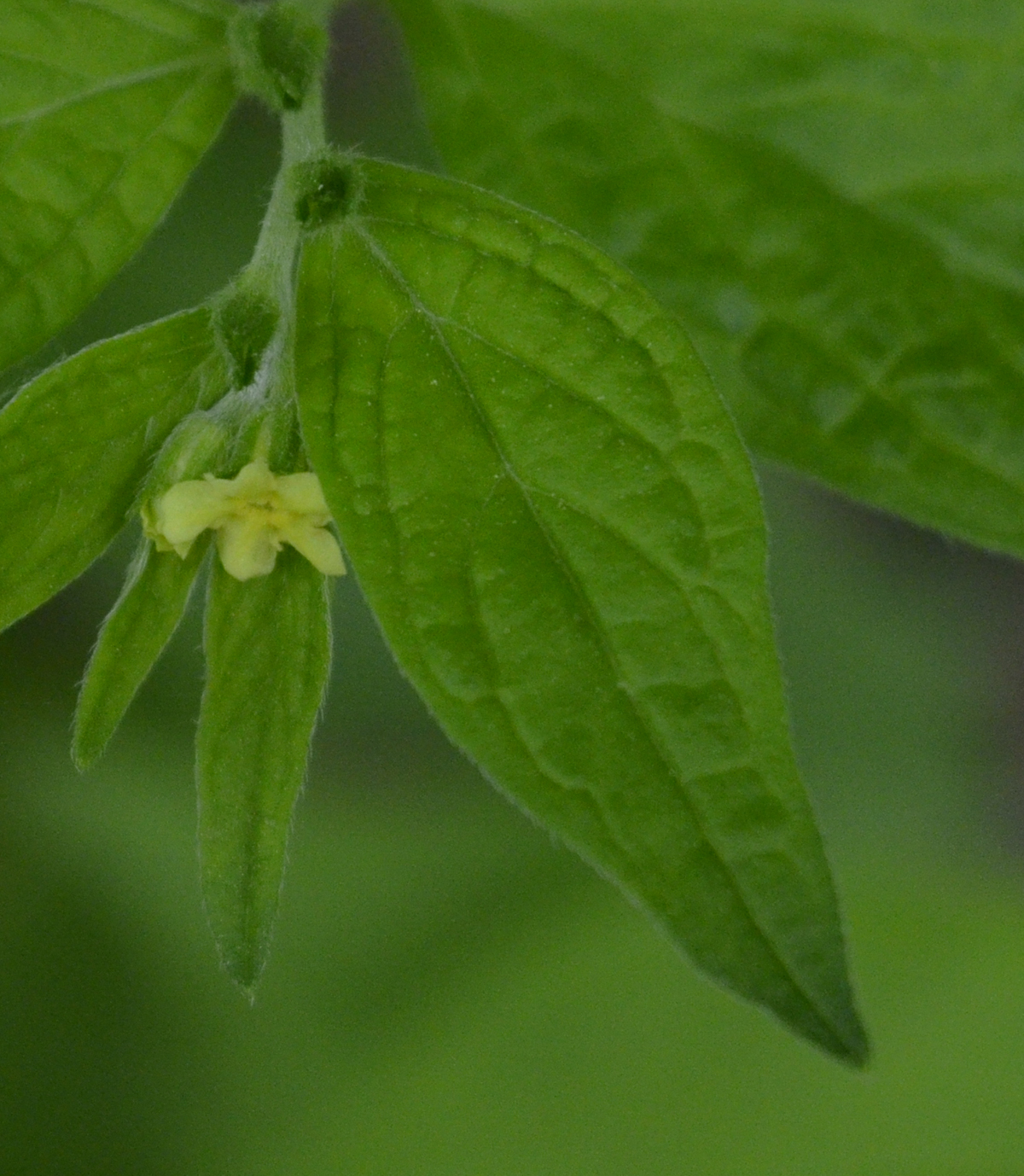
You can see some of the five green parts that hold the tube of the flower. There isn’t much of a stem on the flower.
It took a couple more years to figure out what they were. I was reading a post on a nature website I like by P. Allen Woodliffe about spring wildflowers at Rondeau Provincial Park and there was a photo of my mystery plant. It was called False or American Gromwell, Lithospermum latifolium. It has a few other common names, too, including Broad Leaved Puccoon.
There are some imported Lithospermums around so I wasn’t sure that mine was the “real” native one. I did some further checking and found a photo of some at the Riverwood Conservancy in Mississauga on their Native Plant Propagation team newsletter and noticed that is was listed on the native plant list for the park.
That just meant I had to confirm that the actual plants I was looking at each spring were the ones on the list! So this year, in 2018, I took more photos and submitted them to iNaturalist. I was able to get confirmation from a reputable source that my photos are of the correct plant.
What Is This Big Bushy Woodland Plant with Tiny Shiny White Fruit Like Baby Teeth Tucked Against the Stem?
The oldest “nutlets” near the bottom of the stem are turning the white colour of ripe ones.
I kept a closer eye on the plants this spring while trying to confirm the id, and was able to get a photo of the seeds that developed after the flowers finished. They are funny looking things, shiny and white like baby teeth and they grow tucked in against where the leaves join the stems where the flowers used to be. In some descriptions they are called white “nutlets.” They are NOT edible!
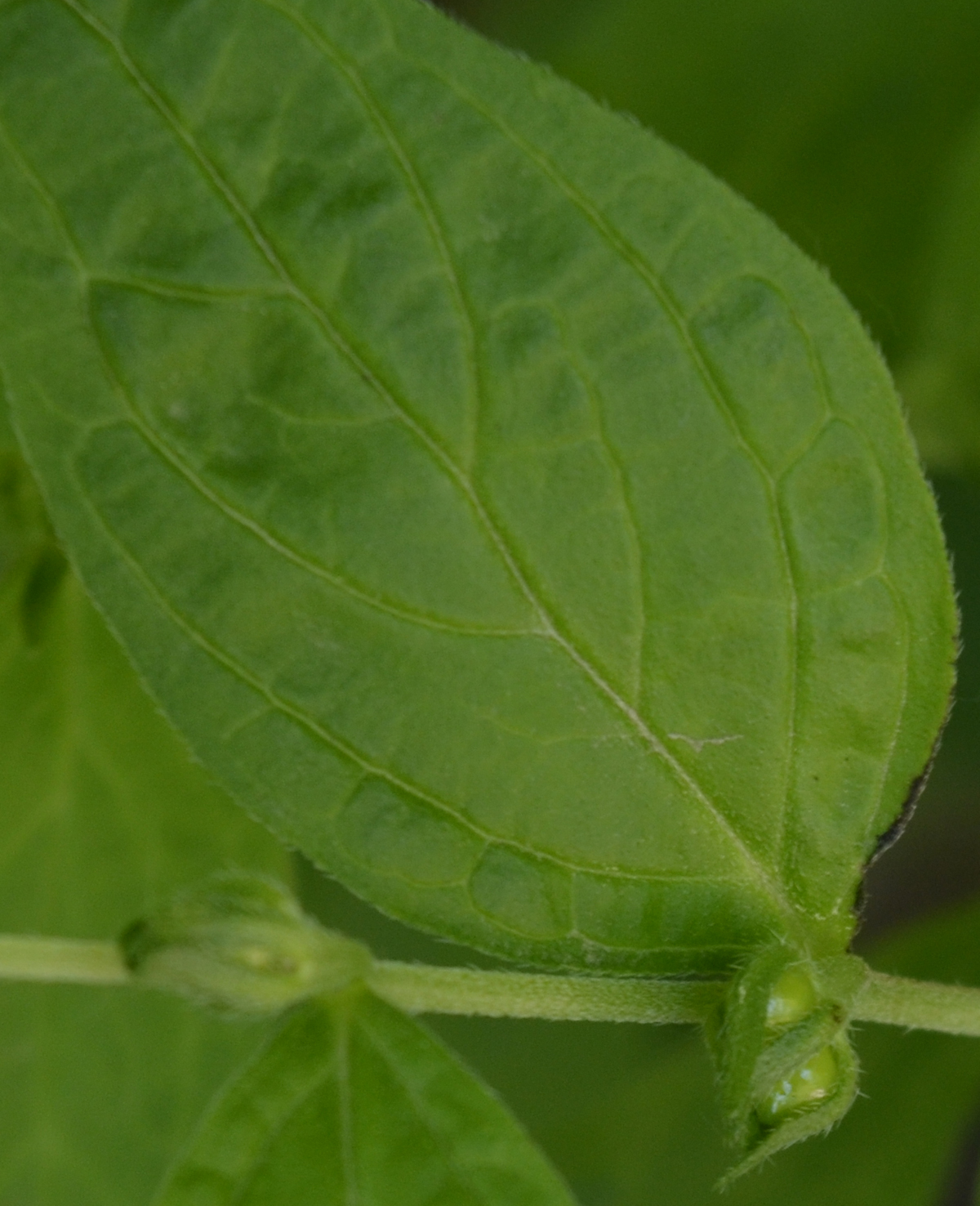
The “nutlets” are green before they ripen. They are NOT edible.
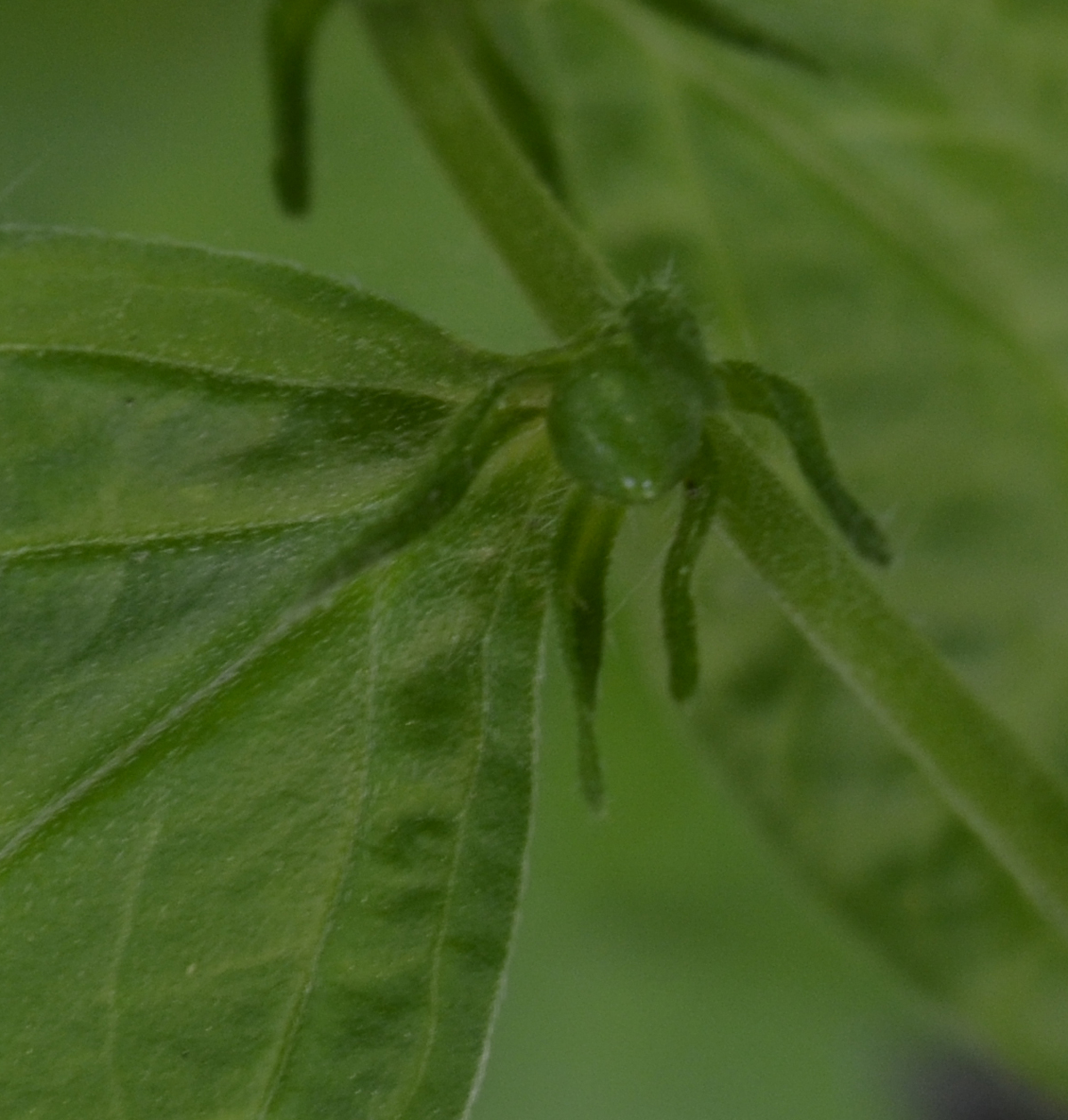
Because the flowers open at different times, the same plant can have flowers, green “nutlets” and white “nutlets.”
Is American Gromwell, False Gromwell or Broad-Leaved Puccoon Endangered in Ontario?
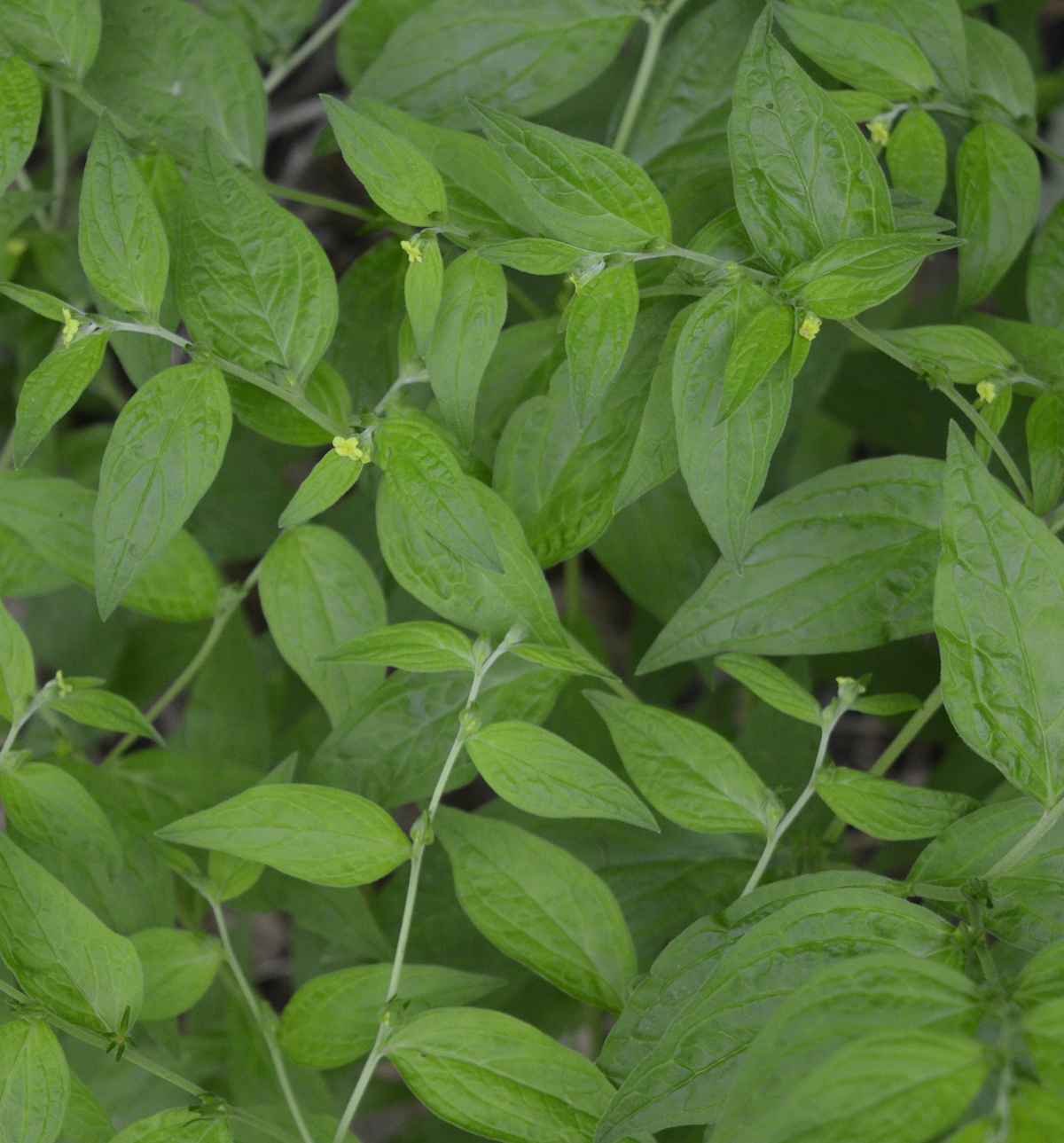
The small flowers are tucked into the joints with the leaves.
No. This native plant is not common in southern Ontario but it is not endangered. It is listed as S3 which means it is “vulnerable” in Ontario. (ranks move from common, s4, to vulnerable, to imperiled, to critically imperiled, to historical only, to extirpated.)
So it is quite possible you may see this plant if you keep an eye out in late May and early June in an Ontario woodlot with many native wild plants.
For some reason, it is not listed in many of the older field guides including my edition of Peterson’s. I suspect it may be more common than researchers know–but people cannot report it because they don’t know what it is!
Related Reading
- Illinois Wildflowers: American Gromwell
- Minnesota Wildflowers: American Gromwell
- Conservation Status Subnational Ranks (s-rank)
Join In
Have you ever had to hunt to figure out what a new-to-you plant was? Please share your tale with a comment.

